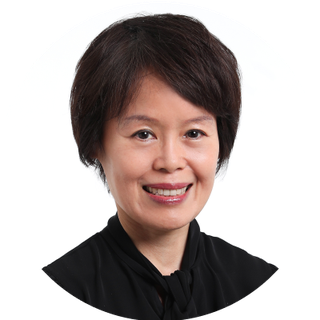CPF interest rates 'offer best risk/return tradeoff'

Singapore
A REVIEW of the CPF Investment Scheme (CPFIS) is underway, but Central Provident Fund (CPF) members are likely better off staying within the safety of the CPF's risk-free and guaranteed interest rates, said Ng Kok Song, former group chief investment officer of Singapore's sovereign wealth fund GIC.
Speaking on the sidelines of the annual investment conference of the CFA Society Singapore last Friday, Mr Ng said the CPF's guaranteed rates of up to 3.5 per cent on the Ordinary Account money and up to 6 per cent on retirement balances for those aged 55 and above are a means to participate in the returns generated by GIC.
The rates are also attractive against today's backdrop of muted economic growth and low expected future returns, which are estimated by Keith Ambachtsheer, president of KPA Advisory Services, to be just 2.5 per cent in annualised real terms after inflation. Mr Ambachtsheer was a speaker at the conference.
Mr Ng said: "The question of course is whether the government is able to sustain those rates - how are we set up to optimise over the long term the returns on the portfolio?"
He said GIC has a number of qualities in its favour. One is that it has accumulated a range of expertise across various asset classes over more than three decades since it was set up. And it invests with a long-term perspective.
"GIC has the capability to capture the opportunity set available to us and to do so with a long-term orientation. If you're going to do better than most other players, you have to differentiate yourself. Because your money is long-term money, you should exploit the illiquidity premium, be prepared to take on risks that others would not take because you expect to be rewarded with higher returns.
"So I think instantly we have a good vehicle to go for higher returns in a low-return environment, to do it with a long-term orientation and with economies of scale."
He said it is likely that low economic growth will persist "because we're going through a prolonged de-leveraging phase".
"That means asset returns are likely to be very modest."
Mr Ng, who is chairman and founding partner of Avanda Investment Management, was a panellist at the conference.
CPF monies are invested in Special Singapore Government Securities (SSGS). While these monies are not transferred directly to GIC for management, SSGS forms part of government assets managed by GIC.
In a speech in September, Deputy Prime Minister Tharman Shanmugaratnam said the CPFIS was set up to offer CPF members a way to earn higher returns on their savings, but it was not "fit for purpose". Over the past 10 years, members who invested through the CPFIS would have been better off leaving their money in Ordinary Account to earn the guaranteed 2.5 per cent annual rate.
CPF members currently have two options in terms of returns for their funds. They can leave money in their accounts to earn the default interest rates, or make their own choices of investment funds in the CPFIS. A third choice in the offing is the Lifetime Retirement Investment Scheme, a low-cost diversified option proposed by the CPF Advisory Panel.
As at June, there was S$114.8 billion in Ordinary Accounts and S$79.9 billion in Special Accounts. Investments in the Ordinary and Special Accounts through the CPFIS have dropped since 2011. As at June 2016, S$18.7 billion of Ordinary Accounts and S$5.1 billion of Special Accounts is invested, compared to S$23.8 billion and S$6.5 billion respectively in 2011.
Taking the cue from Mr Ambachtsheer's projection of future real returns of 2.5 per cent per annum, Mr Ng said: "If inflation is 2 per cent, that means you get no more than 4.5 per cent in nominal returns. You can compare an average of 5 per cent (in CPF interest rates) with a risk product. The arithmetic is simple. The reason people say I hope to get more is because of the past; they were so used to very high returns. What CPF offered them was low compared to what could be achieved.
"But the past 30 years up to 2008 was a period when interest rates came down. It was an unusual period of high returns for bonds and equities that's not going to repeat itself. The reality now is that the guaranteed rates are so much better than what you can conceivably earn on your own in the future."
He added: "It will be quite difficult for private-sector fund managers to come up with credible vehicles to deliver a better risk/return tradeoff."
The 4 per cent floor rate for monies in Special, Medisave and Retirement Account has been extended until end-December 2017.
BT is now on Telegram!
For daily updates on weekdays and specially selected content for the weekend. Subscribe to t.me/BizTimes
International
Fed survey cites inflation, US election as key financial stability risks
Oil prices steady after Iran plays down reported Israeli attack
G7 pledges swift aid for Ukraine, seeks to calm Middle East
H5N1 strain of bird flu found in milk: WHO
China moves to boost foreign investment in domestic tech companies
Xi orders China’s biggest military reorganisation since 2015
